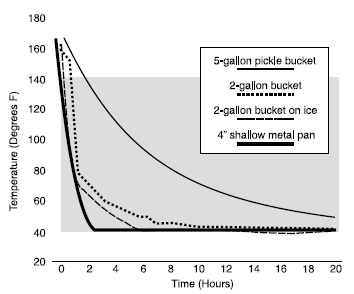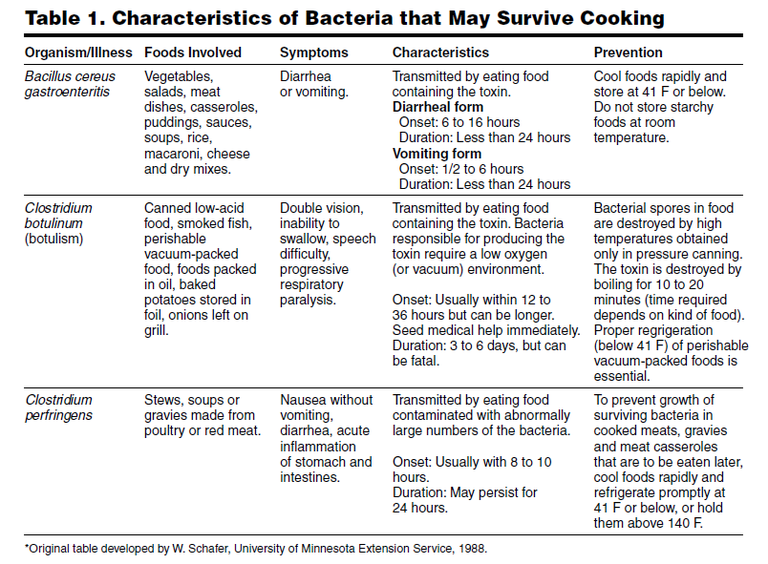Pickle Buckets Can Cause Foodborne Illness! (FN1381, Reviewed Nov. 2017)
Availability: Web only
To be safe, cool foods from 140 F to 70 F in less than two hours and then to 41 F in less than four hours.
Even if the food has been heated to boiling, spores of bacterial pathogens such as Clostridium perfringens, Clostridium botulinum and Bacillus careus can survive. When temperatures get near 100 F, these spores can germinate, and the bacteria start reproducing very rapidly. For example, if there were just 10 Clostridium spores in a food and optimal conditions existed for four hours, the organism could multiply to levels well above 100 million. This is more than enough to cause sickness.
The following graph shows cooling curves of chili in different containers. Chili cooled in a pickle bucket in a 40 F cooler did not cool to 41 F even after 20 hours in the cooler. Chili cooled in a two-gallon plastic container cooled more rapidly but required about 10 hours to reach 41 F.

Acceptable cooling occurred when chili (at a depth of 2 inches) was placed in a shallow metal pan in a 40 F cooler. Chili (at a depth of 10 inches) in a two-gallon plastic bucket cooled within acceptable limits only when an ice bath was used and the mixture was stirred periodically.
Leftovers and pre-prepared foods that have been properly cooled should reach 165 F within two hours during the reheating process.
Cool foods rapidly by following some simple procedures:
Divide food into small batches.
• Liquid foods should be no more than 3 inches deep. Chunky or thickened foods should be no more than 2 inches deep because they take longer to cool.
• Set open pans of food on the top shelves of the cooler; cover the food after it has cooled. Leaving the lid off helps the food cool faster. Prevent cross contamination by placing cooked foods above raw food.
• Adjust cooler thermostat if the temperature of the food is not maintained at 41 F during storage.
Use an ice water bath.
• Set containers of hot food in an ice bath containing a 50:50 mixture of ice and water. Food temperatures drop very rapidly in this mixture. Stir food periodically with a clean, sanitized utensil to promote cooling. Monitor cooling by measuring the temperature periodically with a calibrated thermometer.
Regardless of the cooling method, foods cool more quickly in metal pans than in plastic containers.

November 2017


